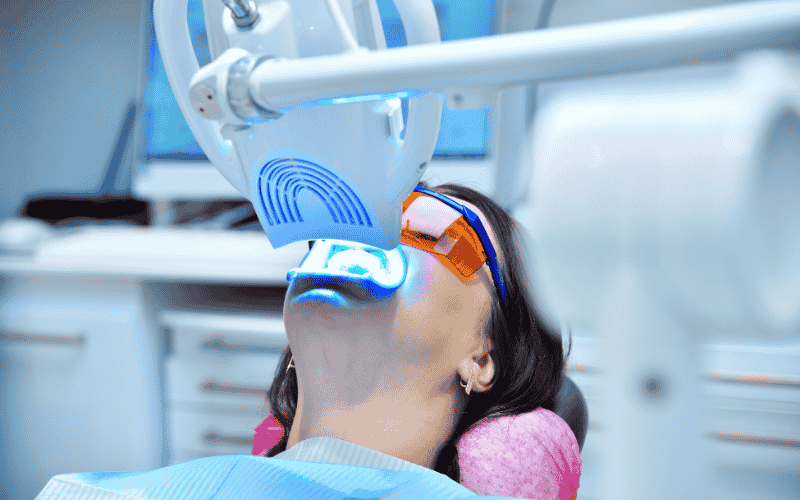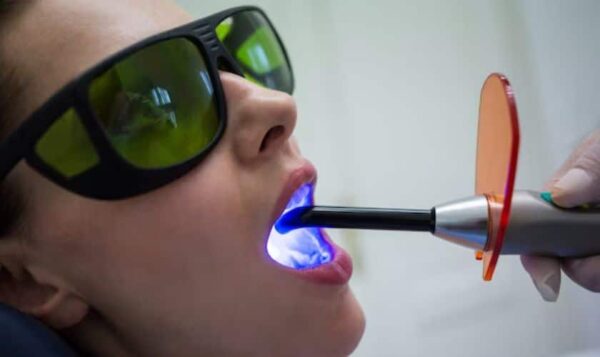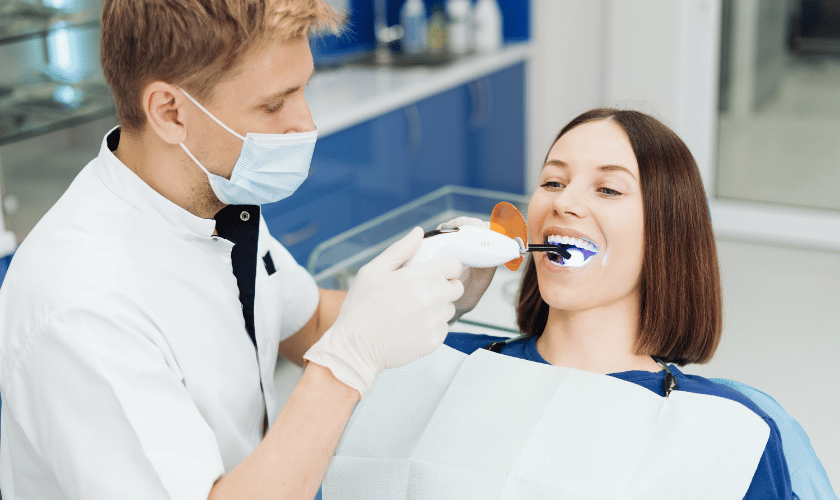23945 Franz Rd Suite A, Katy, TX 77493
Painless Dentistry: How Laser Technology is Changing the Game
Are you one of those people who dread going to the dentist because of the pain and discomfort associated with dental procedures? Well, worry no more! The game is changing, thanks to laser technology in dentistry. Say goodbye to painful injections and uncomfortable drilling, and hello to a painless dental experience that will leave you smiling from ear to ear. In this blog post, we’ll explore how laser technology is revolutionizing modern dentistry and why it’s time for you to make the switch. Get ready to discover a world where dental appointments are stress-free and comfortable – let’s dive in!
Laser dentistry is a newer technology that is quickly becoming the preferred method for many dental procedures. Lasers can be used for a variety of different treatments, including teeth whitening, cavity removal, and even biopsies. Laser dentistry is often touted as being much less painful than traditional methods, and many patients report feeling little to no discomfort during their procedure.
While laser dentistry is still relatively new, it has already been shown to be a safe and effective way to treat various dental issues. The use of lasers in dentistry is constantly evolving, so it’s likely that even more procedures will be able to be performed with this technology in the future. If you’re looking for a pain-free dental experience, laser dentistry may be right for you.
Advantages of Laser Technology in Dentistry
Laser technology has revolutionized the dental industry, making many procedures quicker, easier, and painless. Here are some of the advantages of laser technology in dentistry:
-Lasers can be used to remove tooth decay quickly and painlessly.
-Lasers can be used to whiten teeth safely and effectively.
-Lasers can be used to treat gum disease and other conditions.
-Lasers can be used to make precise adjustments to dental implants and other prosthetics.
-Lasers can be used to remove lesions and tumors without surgery.
How Laser Technology Works in Dentistry
Laser technology has been used in dentistry for over two decades and has revolutionized the way dental procedures are performed. Laser dentistry is a minimally invasive alternative to traditional dental techniques, and offers a variety of benefits for patients, including less pain and discomfort, shorter recovery times, and fewer side effects.
How does laser dentistry work? Lasers are used to remove tissue or tooth structure by vaporizing it with heat. The type of laser used will determine the wavelength of light that is emitted, which in turn affects the depth of penetration into the tissue. There are different types of lasers that can be used in dentistry, each with its own specific purpose. For example, hard tissue lasers are used to remove decay or prepare a tooth for a filling, while soft tissue lasers are used to treat gum disease or remove excess tissue.
Laser dentistry is often associated with painless procedures, as the lasers can be used to numbing effect on the area being treated. This means that many procedures can be performed without the need for local anesthesia or sedation. In addition, laser energy can help to promote healing by stimulating cells and blood vessels in the area.
If you’re considering any type of dental treatment, be sure to ask your dentist if they offer laser dentistry options. You may be surprised at just how much this cutting-edge technology can benefit you!
Different Types of Lasers Used in Dentistry
Lasers have been used in dentistry for a variety of purposes for many years. However, recent advances in laser technology have made them an even more valuable tool for dental professionals. Here are some of the different types of lasers that are being used in dentistry today:
1. Hard tissue lasers – These lasers are used to remove tooth enamel or bone tissue. They can also be used to prepare a tooth for a filling or crown.
2. Soft tissue lasers – These lasers are used to treat gum disease and other conditions of the soft tissues in the mouth. They can also be used to remove lesions or tumors from the mouth.
3. Diode lasers – These lasers are commonly used for teeth whitening procedures. They can also be used to treat cold sores and other mouth lesions.
4. Er: YAG lasers – These lasers are often used for cosmetic procedures, such as wrinkle reduction. They can also be used for more invasive procedures, such as removing wisdom teeth or treating oral cancer.
5. CO2 lasers – These lasers are the most powerful type of laser used in dentistry. They can be used for a variety of purposes, including hard and soft tissue removal, teeth whitening, and wrinkle reduction.
Overview of Common Procedures with Lasers
Today, lasers are commonly used in many different industries including dentistry. In dentistry, lasers can be used for a variety of procedures such as teeth whitening, cavity removal, and gum surgery. Lasers are also becoming more popular for use in root canals and dental implants.
Lasers offer a number of benefits over traditional dental procedures. Lasers are more precise than traditional tools and can target specific areas without damaging surrounding tissue. This means that procedures with lasers are often less invasive and cause less pain and bleeding than traditional methods. Lasers also allow for a quicker recovery time and reduced risk of infection.
If you are considering any type of dental procedure, be sure to ask your dentist if they offer laser options. You may be surprised at how much easier and more comfortable your experience can be with the latest laser technology.
Benefits of Laser Technology over Traditional Techniques
Laser technology has revolutionized the field of dentistry, providing patients with a much more comfortable and effective experience. Lasers can be used for a variety of dental procedures, including teeth whitening, cavity removal, and gum contouring. Here are just a few of the many benefits of laser dentistry:
1. lasers are much less invasive than traditional dental instruments, meaning that procedures are less painful and recovery time is shorter;
2. laser energy can precisely target specific areas without damaging surrounding tissue;
3. laser procedures are often quicker than traditional techniques, meaning that you can get in and out of the dentist’s chair faster; and
4. many patients report feeling more relaxed during laser dental procedures due to the minimal noise and vibration associated with them.
Conclusion
Laser technology has revolutionized the field of dentistry, providing a painless and more precise way to diagnose and treat dental issues. The use of lasers in dentistry is becoming increasingly commonplace as people look for ways to reduce pain and discomfort during dental treatments. With laser-assisted procedures, patients can receive the same quality care with less chance of infection or other complications that might arise from traditional methods. Whether you are looking for relief from cavities or just want a brighter smile, laser technology is changing the game when it comes to modern dentistry.
Laser dentistry is the use of lasers in dental treatments. Lasers can be used for a variety of dental procedures, including tooth whitening, cavity removal, and gum surgery.
Lasers are used to remove or reshape tissue in a targeted way. This can be done with less pain and bleeding than traditional methods. Lasers can also be used to speed up healing time after dental procedures.
Laser dentistry can provide a more comfortable experience for patients, as well as shorter recovery times. In some cases, laser dentistry can also be more cost-effective than traditional methods.



